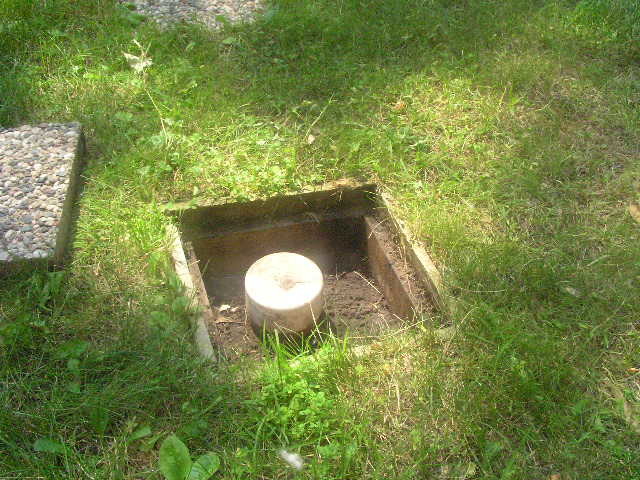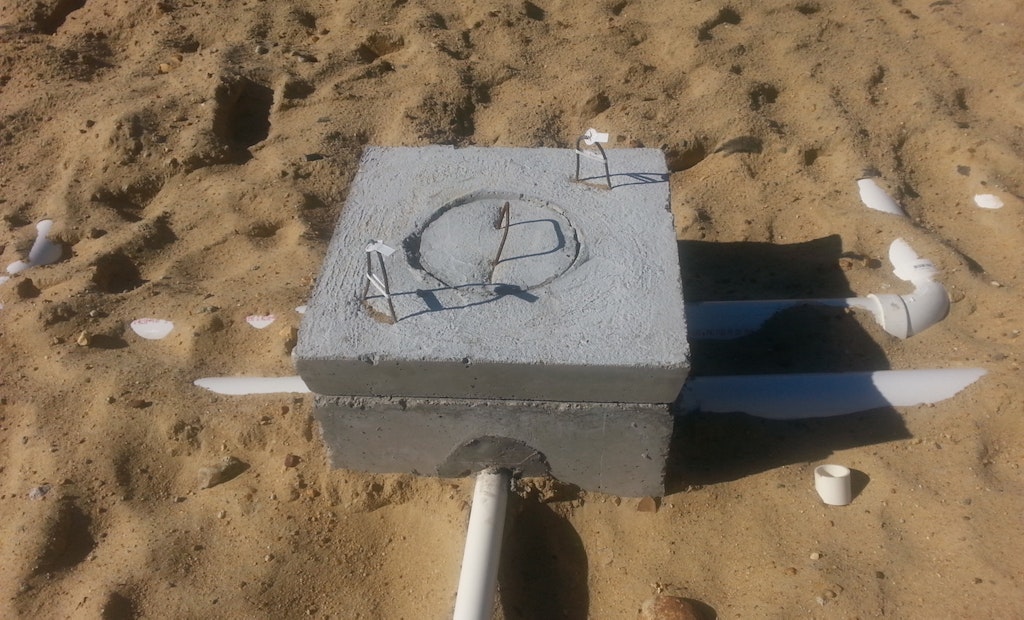Interested in Systems/ATUs?
Get Systems/ATUs articles, news and videos right in your inbox! Sign up now.
Systems/ATUs + Get AlertsThe goal of distribution is to spread wastewater and effluent over space and time to allow physical, biological and chemical treatment processes to effectively remove contaminants. Installer activities can greatly impact how closely gravity systems come to achieving ideal treatment. Since the movement within the trenches is governed by gravity, the main factor of installation that maximizes use of the entire trench bottom is keeping it level across the trench width and along the trench length.
Installation
Distribution boxes and drop boxes must be properly bedded to remain stable over time. The proper bedding is a thin layer of washed rock or pea gravel placed on a level foundation of undisturbed or properly compacted native soil. Alternately, they can be placed directly on smooth, level undisturbed native soil. Check and confirm the elevation of any distribution device (d-box, drop box, header pipe or stepdown). This specification determines the depth of the succeeding trench bottom in gravity distribution. If trenches are installed too deeply, there may be inadequate separation to a limiting condition, resulting in inadequate treatment of effluent before it rejoins the hydrologic cycle. Confirm that the device is properly oriented relative to the inlet and outlets.
Pipes exiting the device must be securely installed and properly bedded or they will settle over time, resulting in uneven distribution, infiltration or both. Bedding pipes connected to the d-box must be done carefully to avoid damaging the box or (in the case of poly boxes) causing wall deflection. This work should be performed by hand because machine traffic can potentially crush components.
D-boxes and drop boxes must be rendered watertight. This not only prohibits infiltration by water and roots, it prevents exfiltration of effluent that can overload the soil adjacent to the box and result in shifting of the component over time. Boxes that include pipe penetrations that remain watertight after installation are the best choice. Do not use concrete to seal pipes to boxes because it is ineffective and results in significant problems over time. Concrete and poly boxes fitted with pipe penetration seals are readily available and are the best choice. Some seals will accommodate pipes of different diameters. These must be carefully opened according to the manufacturer’s recommendations to avoid leaks.
It is absolutely critical that d-boxes be installed level because they are used on level (or nearly level) sites. While absolutely equal distribution of flow with a distribution box is difficult to achieve, installing a level d-box provides the optimum conditions for near-equal flow to trenches. If all trenches are installed at equal elevations, the pipes exiting the d-box should theoretically be on the same grade. If the pipes exit the box with different grade, unequal distribution will certainly occur.
Proprietary flow control devices (known as speed levelers) may be installed in outlet pipes in d-boxes to adjust and/or control flow to individual trenches; however, these will not compensate for improper bedding, leveling and grading. These devices can also be used to restrict flow to an individual trench if needed over the course of management activities.
While leveling drop boxes is not as critical as leveling distribution boxes, they must still be installed so that they remain stable. The proper bedding is a thin layer of washed rock or pea gravel placed on a level foundation of undisturbed or properly compacted native soil. Alternatively, they can be placed directly on a smooth, level foundation of undisturbed or properly compacted native soil.

Management
The importance of providing access for management cannot be overemphasized. Surface access is critical for inspection, operation and maintenance. For tanks, this will typically be an access riser and lid to grade. These must be installed using the appropriate sealants and/or fasteners for the component. Consult the manufacturer for specifications of sealants and fasteners to be used with their particular products.
For d-boxes and drop boxes used in gravity distribution, this typically consists of an access riser and lid. The access must be made watertight to prohibit infiltration of extra water from the surrounding area because the box is connected to the trenches.
Proper installation of inspection ports within trenches provides a point from which to check system operation as well. The port can be constructed from PVC pipe with several slots or holes in the bottom 6 inches. Install the port so that it is in contact with the bottom of the trench and stabilize it during backfilling. It is critical that it remain vertical and secure after the final soil cover is placed over the site.
About the author
Sara Heger, Ph.D., is a researcher and educator in the Onsite Sewage Treatment Program in the Water Resources Center at the University of Minnesota, where she also earned her degrees in agricultural and biosystems engineering and water resource science. She presents at many local and national training events regarding the design, installation and management of septic systems and related research. Heger is the President-Elect of the National Onsite Wastewater Recycling Association and she serves on the NSF International Committee on Wastewater Treatment Systems. Ask Heger questions about septic system design, installation, maintenance and operation by sending an email to kim.peterson@colepublishing.com.






